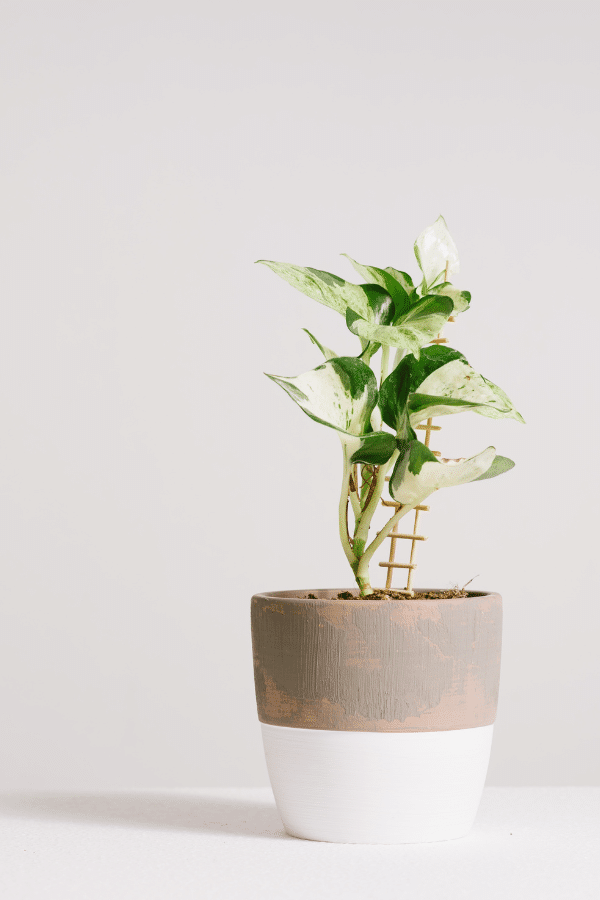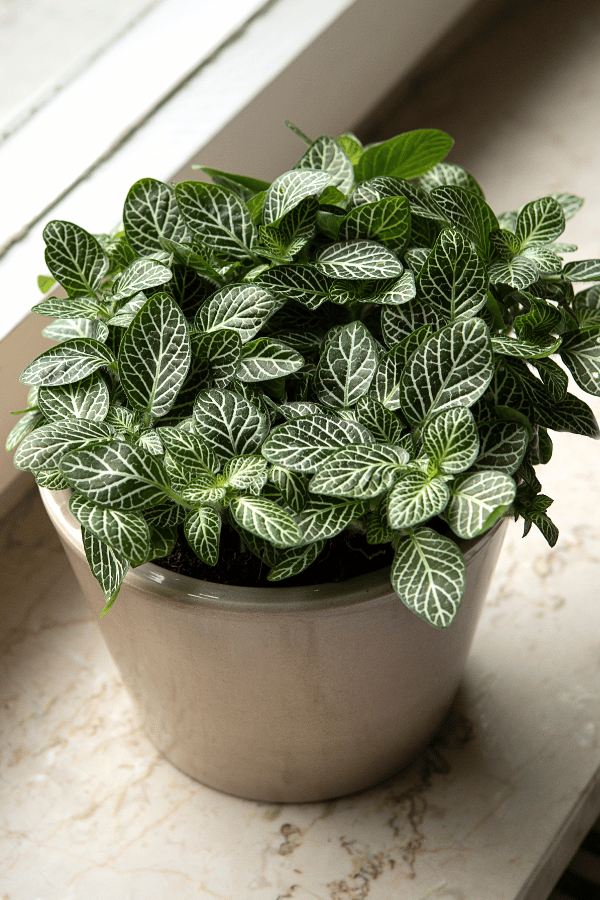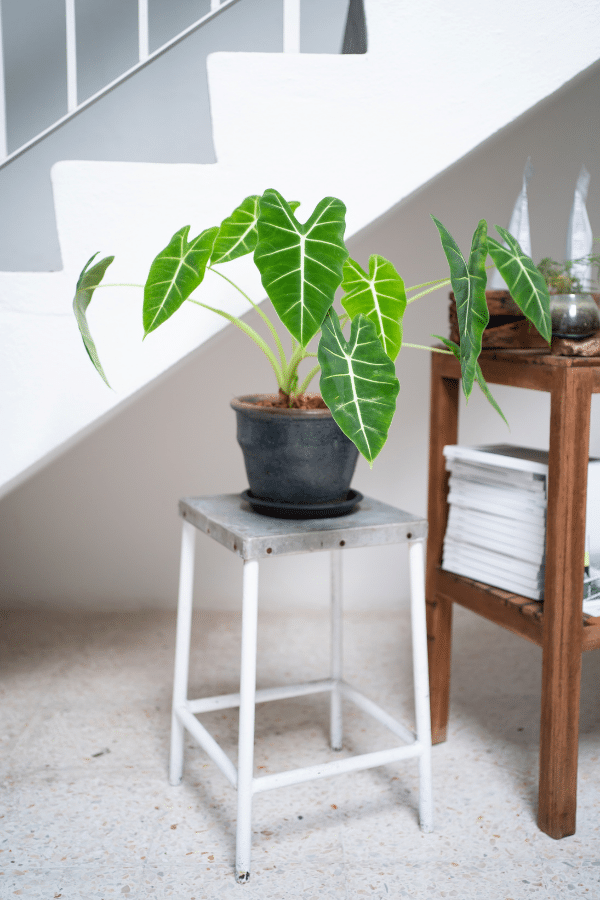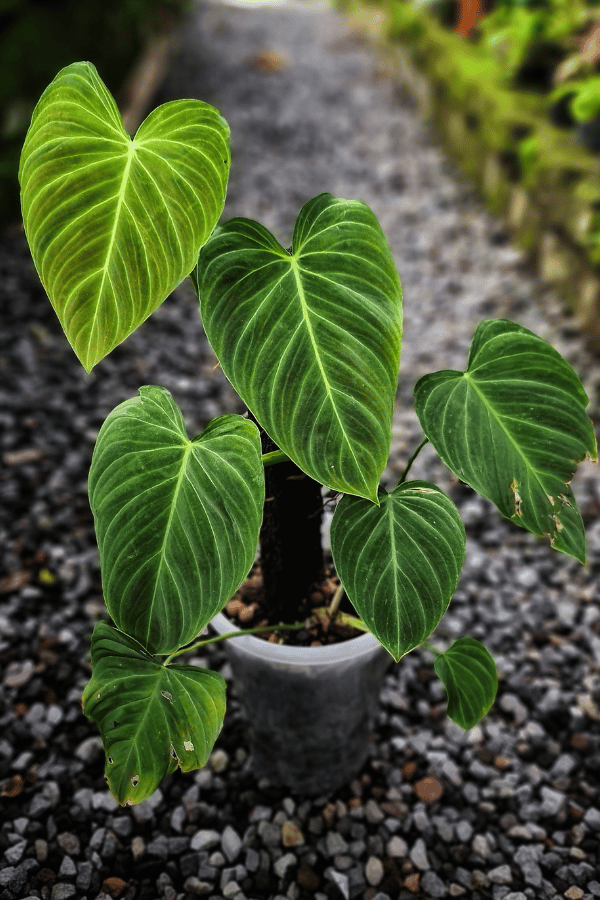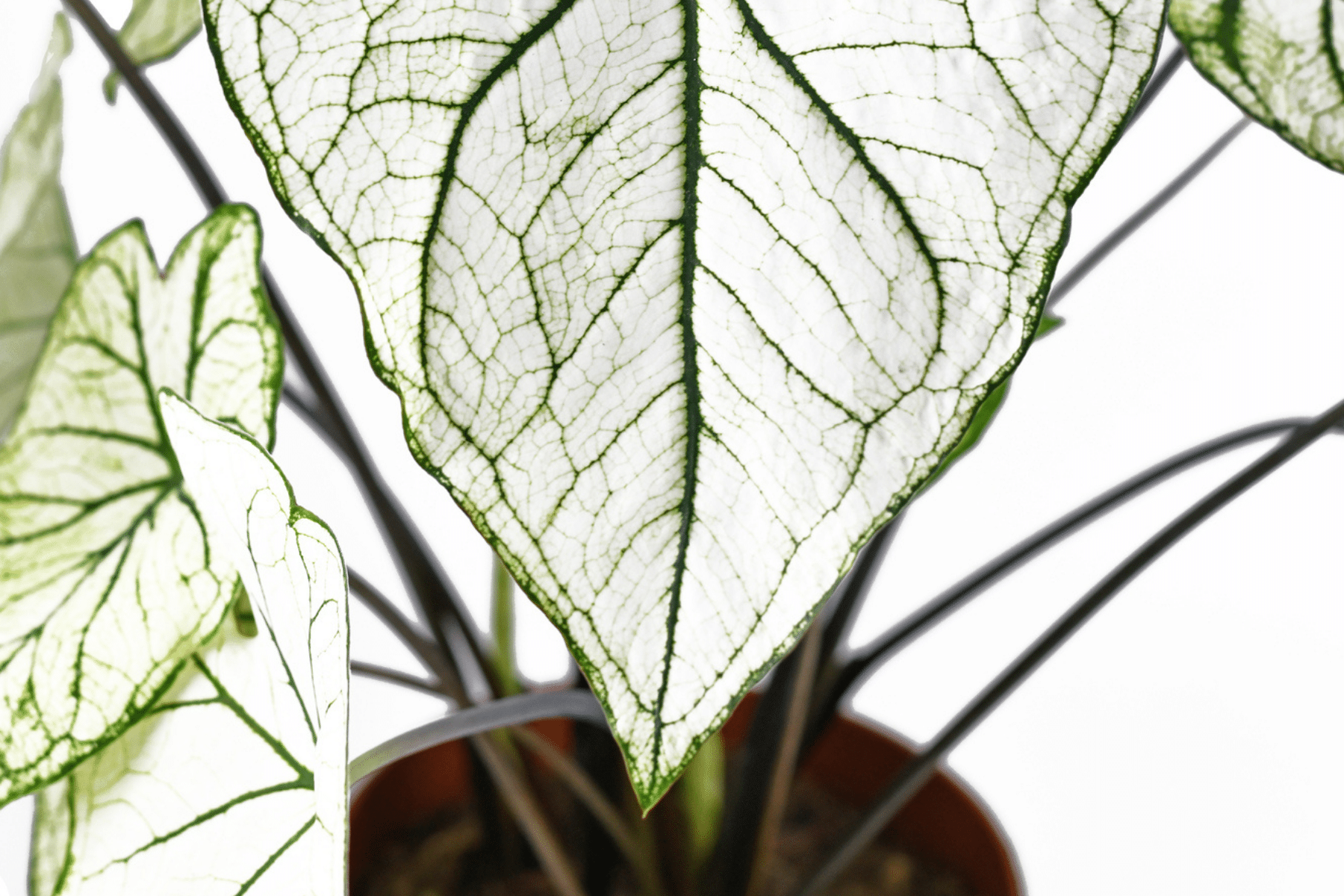Ficus Elastica Tineke
Scientific Name: Ficus Elastica Tineke
Common Name: Tineke Rubber Tree, Indian Rubber Fig
Ficus Elastica Tineke commonly called the Tineke Rubber Tree is a beautiful variegated variation of the Ficus Elastica, which is also known as the Rubber Plant. Ficus elastica tineke care is relatively easy as this is a very low maintenance houseplant. Infrequent watering, bright indirect lighting, and minimal pests and diseases make this houseplant a very popular one!
Quick Care Overview
| Common Name | Tineke Rubber Tree, Indian Rubber Fig |
| Scientific Name | Ficus Elastica Tineke |
| Origin | Southeast Asia |
| Identification | Large, thick, leathery, variegated leaves |
| Height | 2 to 8 feet tall |
| Soil | Aerated, well-draining soil |
| Water | Allow soil to dry out completely before watering |
| Temperature | 60-95F |
| Sunlight | Bright, indirect light |
| Toxic to Cats & Dogs | Yes |
| Toxic to Humans | Mildly |
| Pests | Aphids, scale, spider mites |
| Diseases | Root rot |
Below we will dive deep into how to care for Ficus Elastica Tineke care.
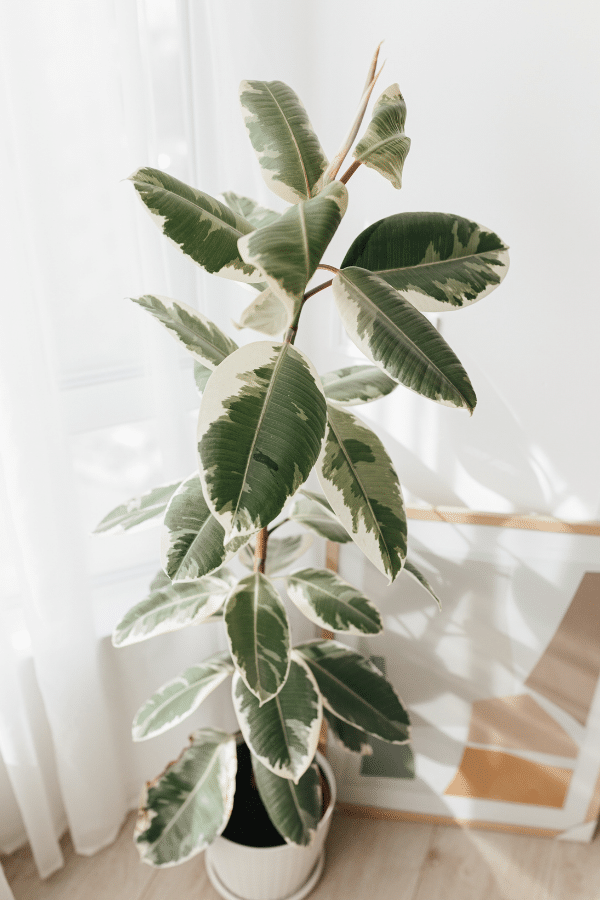
Ficus Elastica Tineke History
A new rubber tree on the market is quickly gaining popularity. Southeast Asia native, Ficus elastica “Tineke”, or commonly known as the India rubber fig, is a variegated variety of Ficus Elastica that is both gorgeously decorative and is also a good luck magnet. It is no wonder that this showy plant is getting so much attention! Belonging to the Moraceae (edible fig) family, this highly variegated tri-color plant is relatively fast-growing, easy to care for, and contains air purifying properties.
Ficus Elastica Tineke Identification
Ficus Tineke can be identified by its large, thick, and leathery leaves. The leaves often span up to 5 inches wide and up to over a foot long. Tricolor variegated patterns in shades of whitish cream and dark green are often tinged with pink and red undertones. The flush of burgundy is more distinct in new leaves and will fade with maturity. The foliage coloration will be at its most vibrant when grown in bright light. Leaves will be broad, glossy, oval-shaped, and have a pointed tip.
Ficus Elastica Tineke Growth Facts
The Ficus Elastica Tineke is a slow-growing plant. It can reach 2-8 feet tall. Be sure to follow all the care instructions below in order to let it grow to its full potential.
How Big Does a Ficus Elastica Tineke Get?
When grown indoors, a ficus Tineke will likely grow between 2 to 8 feet in height at maturity, depending on growing conditions and container size. The plant will usually grow 4-5 times the height of the pot before hitting its maximum growth capacity due to rooting limitations. The growth of Ficus Elastica Tineke is most vigorous in humid conditions.
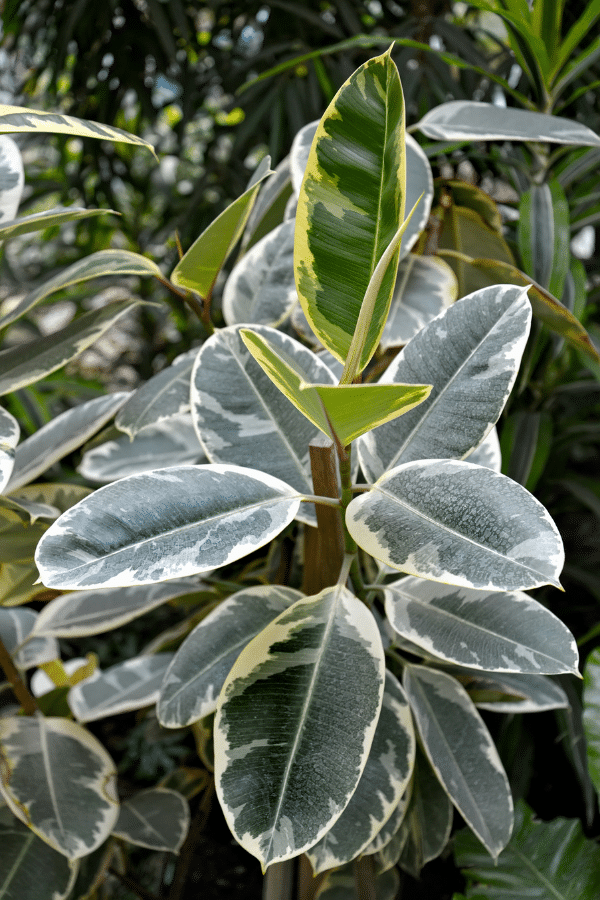
Ficus Elastica Tineke Care
Good overall Ficus Elastica Tineke care is important to give your Ficus Tineke the best growing conditions to live a healthy life. This is an easy to care for houseplant. This Ficus variation needs well-draining, aerated soil, minimal fertilizer, infrequent watering, bright indirect sunlight, and hot, humid environment to grow well.
Best Soil for Ficus Elastica Tineke
Like Ficus Elastica, Ficus Elastica Tineke care needs well-draining, aerated soil. It is not picky and will tolerate almost all types of soil, just as long as there is ample drainage. A standard potting mix rich in organic matter is recommended. Standard potting soil with additions of other mediums such as pine bark, perlite, or peat moss added can provide less compaction and better aeration. It is pertinent that the soil drains properly.
Ficus Elastica Tineke Fertilizer
Ficus Elastica Tineke is not a picky plant and fertilization is not necessary to have adequate growth. However, monthly additions of mild liquid fertilizer will encourage lush foliage growth. Granular slow-release fertilizer may also be applied in spring. Do not apply fertilizer in winter when the plant is dormant.
Ficus Elastica Tineke Watering
Ficus Elastica Tineke does not require frequent watering. In fact, overwatering is a common issue with these plants leading to root rot, so be sure to water sparingly. The thick glossy leaves of this ficus allow the plant to retain a lot of water in its foliage. In the heat of summer, Ficus Tineke will likely require water every week, or at a minimum biweekly, depending on growing conditions. In the winter during dormancy, these plants will likely only need watering once a month to every few months.
Ficus Elastica Tineke Light Requirements
Ficus Tineke flourishes in bright indirect light. This Ficus can adapt to direct sunlight with proper acclimation, as well as indirect light. This plant, like other Ficuses, will adapt to low light conditions. However, keep in mind that in low light conditions the creamy variegation on the foliage will decrease so if you want to keep the uniqueness that is Ficus Elastica Tineke, give it bright indirect sunlight.
Ficus Elastica Tineke Temperature & Humidity
Ficus Tineke thrives in heat. They will grow most expediently in humid and hot places. Optimal growing temperatures are 60-95 degrees Fahrenheit. When winter comes, this tropical houseplant will go into dormancy.
Repotting Ficus Elastica Tineke
Typically, a Ficus will need to be repotted every two to three years. Repotting is best done in spring after it has become rootbound or when the potting soil needs a refreshing. Transferring into a larger container promotes growth. To repot a Ficus Tineke, simply remove the rubber plant from its pot. Gently break apart highly compacted dirt within the roots. Next, place the plant into a new larger container that is at least 1-2 inches larger in diameter. Fill the new container with rich, well-aerated potting mix. Ensure to water well and keep out of direct sunlight until well re-established.
Ficus Elastica Tineke Maintenance & Pruning
Ficus Tineke, as a slow-growing houseplant, does not require pruning. However, you can create the shape and height you want by cutting off the primary branches just above nodes. New leaves will appear from the nodes cut.
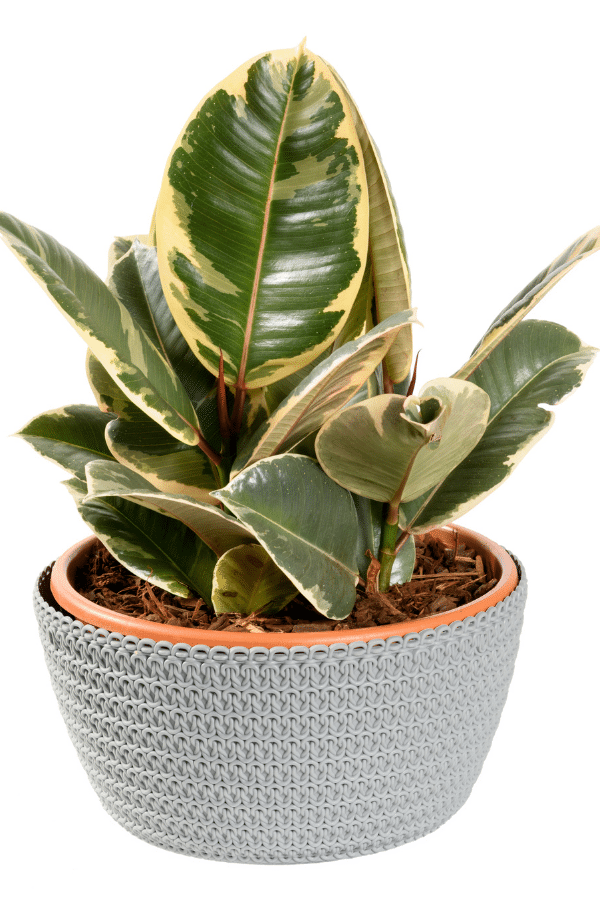
Propagating Ficus Elastica Tineke
Ficus Elastica Tineke can easily be propagated through stem cuttings. Using sharp, clean pruners or a knife, take a leaf cutting with some stem (typically a branch about 12 inches long). Place the cutting in clean water in a bright and warm spot. The cuttings should root within six weeks. Rooting hormone is not necessary but may help. Alternatively, you may place the cut root in a medium for rooting such as potting mix. After your new Ficus is established, repot. Be mindful of the sap that oozes from an injured Ficus Tineke, as this sap can be irritating to the skin and should never be ingested.
Ficus Elastica Tineke Toxicity
Overall, the Ficus Elastica Tineke is moderately toxic to humans from the sap and is toxic to animals.
Toxicity to Humans
The milky white secretions emitted from an injured Ficus Tineke are mildly toxic to humans. This sap may cause irritation to the skin and when ingested may result in vomiting. Do not ingest this plant.
Toxicity to Cats & Dogs
The Ficus Elastica Tineke rubber plant is considered poisonous to cats and dogs. Ficus plants have become the number one cause of cat poisoning in some parts of the world. Ingestion of Ficus plants can cause gastrointestinal issues in animals and should be avoided.
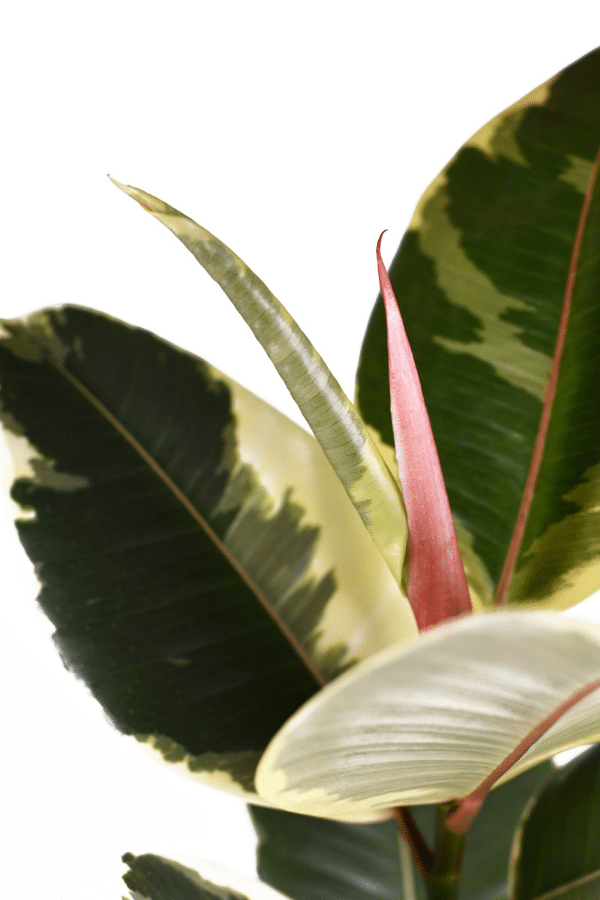
Ficus Elastica Tineke Problems
Ficus Elastica Tineke Leaves Turning Yellow
With Ficus Elastica Tineke care, the most common cause of leaves turning yellow and dropping is overwatering. When there is too much moisture locked in the soil, the roots will begin to rot. With root rot, the ficus plant will be unable to suck up needed nutrients from the soil and the leaves will turn pale yellow.
Ficus Elastica Tineke Leaves Turning Brown
When leaves become black or brown on the Ficus Tineke it is a sign of disease, sunburn, underwatering, or low humidity. Overfertilization may also cause mineral and salt burn resulting in brown leaves.
To remedy this, remove brown and black leaves, water thoroughly, and move to an area with bright, indirect light. Keep in mind that too much direct light can burn leaves as well, so give it a bright indirect sunlit spot.
Ficus Elastica Tineke Diseases
The most common disease that Ficus Tineke may suffer from is root rot due to improper drainage and overwatering. If your ficus shows signs of disease such as yellowing leaves and mushy stems, the best course of action is the repot the plant in fresh, well-aerated soil and remove all diseased parts of the plant.
Ficus Elastica Tineke Pests
Like many other indoor houseplants, Ficus Tineke may fall susceptible to scale, aphids, mites, and more. The use of insecticidal soap is generally an appropriate remedy. If signs of infestation are present, isolate your Ficus from nearby plants and treat it. Neem oil is another readily available pesticide. Keep in mind that a healthy rubber plant growing in ideal conditions is usually pest resistant.

